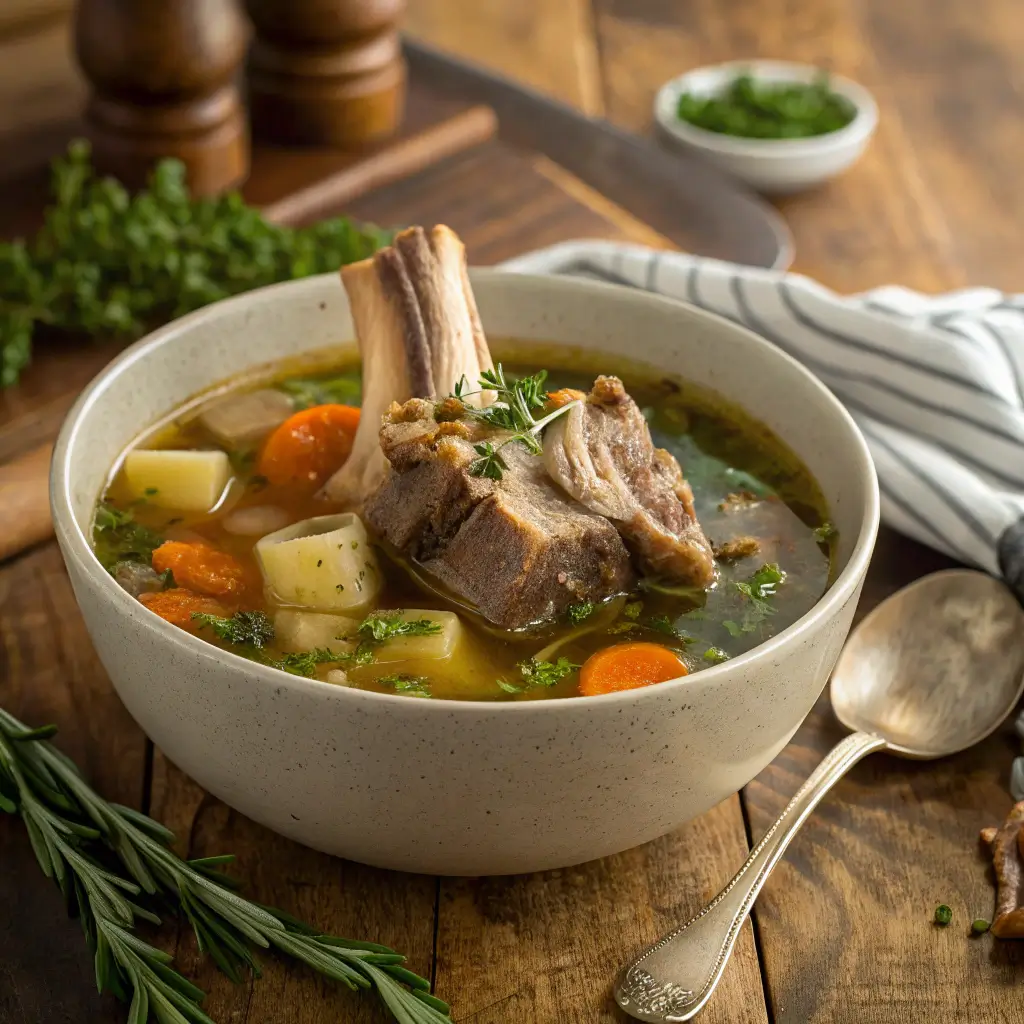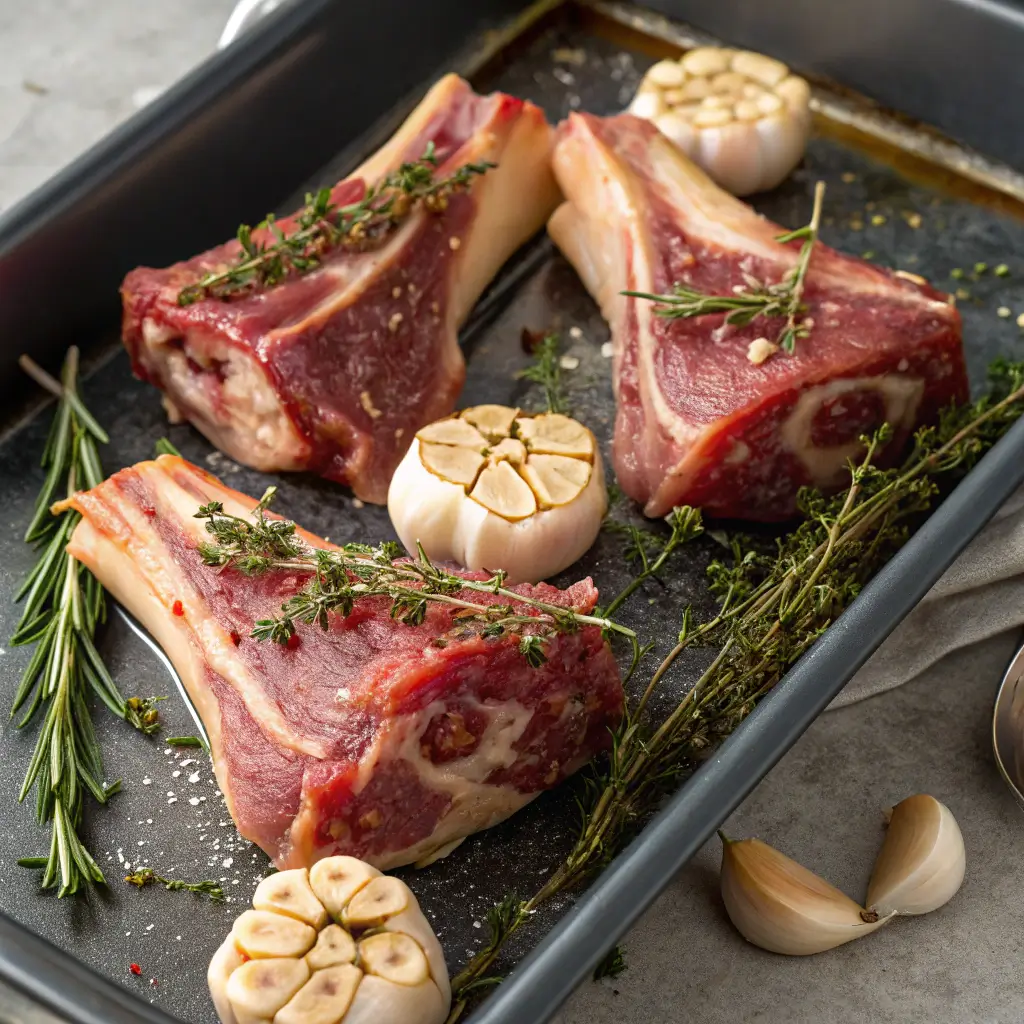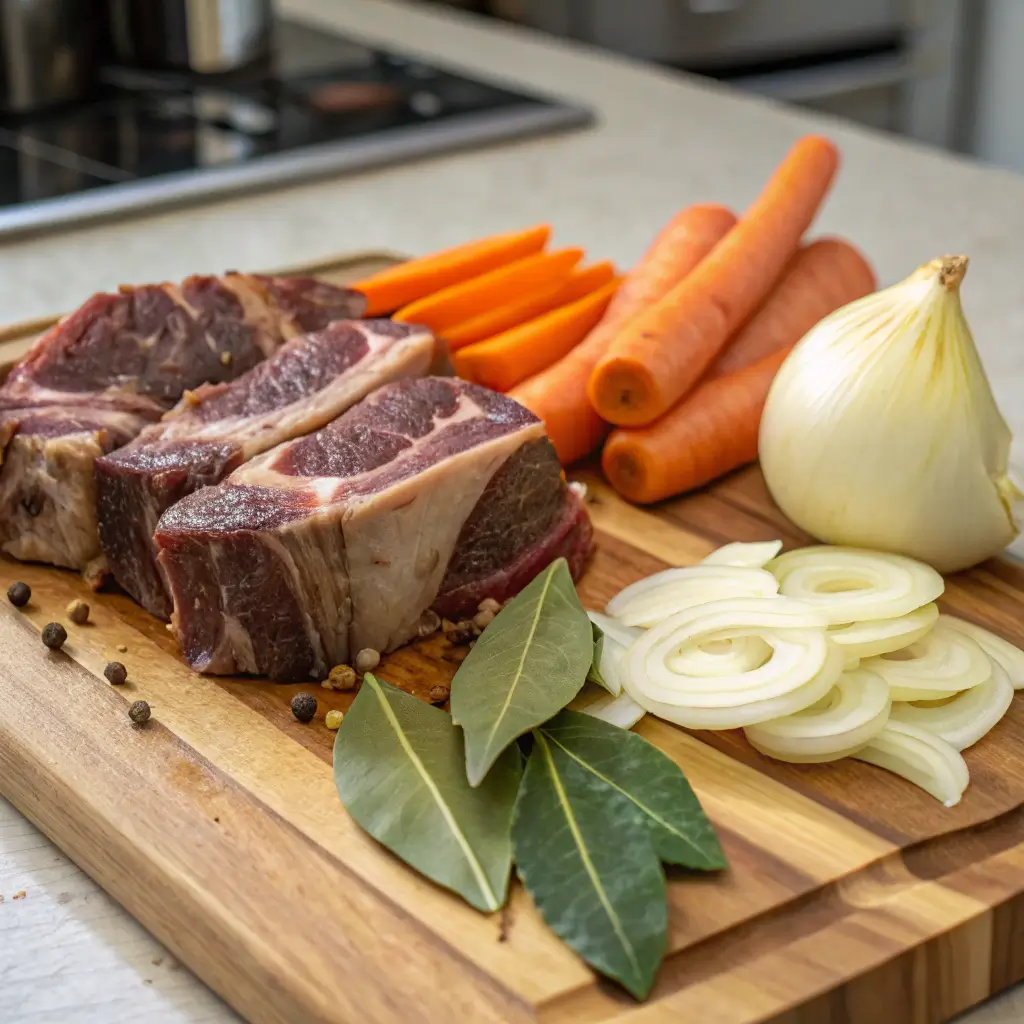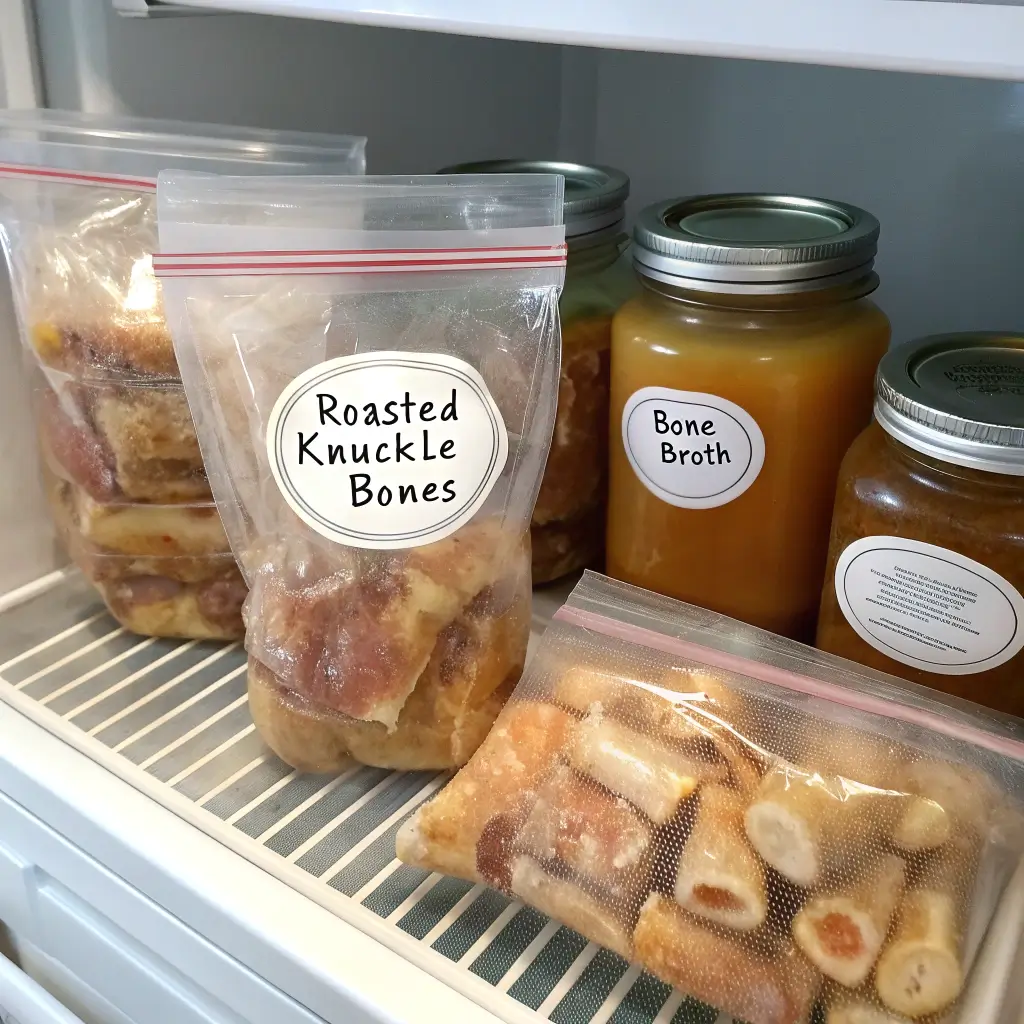If you’ve ever tossed out bones after trimming beef, you’re missing out on one of the kitchen’s best kept secrets: beef knuckle bones. Packed with collagen, marrow, and deep, rich flavor, these bones are the backbone (literally) of excellent stocks, soups, and even roasts.
At gatetasty, we teamed up with Chef Lucas Benetti to unlock the full potential of this budget friendly, flavor heavy cut. Whether you’re making nourishing bone broth or slow roasting for marrow, beef knuckle bones deliver both depth and nutrition.

What Are Beef Knuckle Bones?
Beef knuckle bones come from the joint where the femur meets the knee. This cut contains a combination of connective tissue, marrow, cartilage, and dense bone, making it ideal for creating rich, gelatinous broths and flavor forward slow cooked dishes.
Why They Matter in the Kitchen
| Component | What It Brings |
|---|---|
| Marrow | Adds body, flavor, and richness to soups |
| Cartilage | Breaks down into collagen for thick broths |
| Bone | Releases minerals and enhances mouthfeel |
| Connective tissue | Adds natural gelatin and structure |
Chef Lucas says: “When cooked low and slow, these bones give you more flavor than a rack of ribs and more nutrition than any supplement.”
Chef Lucas Benetti’s Tips for Working with Knuckle Bones
Chef Lucas Benetti recommends handling beef knuckle bones with intention don’t just toss them into a pot. With a few smart steps, you can maximize both taste and nutrition.
Lucas’s Key Tips
- Roast bones first for deeper flavor (at 400°F for 30–40 minutes)
- Use aromatics like onion, garlic, and bay leaves when simmering
- Simmer low and slow at least 8 hours for broth, 24 for stock
- For marrow dishes, season lightly and roast until bubbly
- Cool the broth and scrape off fat before storing or freezing
“You want to pull every bit of goodness from those bones. A little care goes a long way,” Lucas explains.

gatetasty’s Step by Step Bone Broth Method
Here’s our go to recipe for rich, collagen packed beef broth using knuckle bones. This base is perfect for soups, stews, sauces, or sipping on its own.
Ingredients
- 3–4 lbs beef knuckle bones
- 1 large onion, quartered
- 2 carrots, roughly chopped
- 2 celery stalks
- 4 cloves garlic, smashed
- 2 tbsp apple cider vinegar
- 2 bay leaves
- 12 cups water
- Salt to taste (add after cooking)
Instructions
1. Roast the bones
Place bones on a baking sheet. Roast at 400°F for 35–40 minutes until browned.
2. Prep your pot
Add roasted bones, vegetables, and vinegar to a large stockpot or slow cooker. Add enough water to fully cover.
3. Simmer low and slow
Bring to a low simmer and cook for at least 8–12 hours (up to 24 hours for richer stock). Skim foam and fat occasionally.
4. Strain & cool
Strain broth through a fine mesh sieve. Let cool, then refrigerate. Scrape fat off the top before using.

Other Uses: Roasting, Braising & Pet Treats
While broth is the most common use, beef knuckle bones can do much more.
Alternate Uses
| Use | How to Prepare |
|---|---|
| Roasted marrow | Roast halves and scoop onto toast |
| Braising base | Add to stews for richness and depth |
| Dog treats | Roast (no seasoning) and cool completely |
| Sauce base | Simmer with tomato paste for reductions |
| Slow cooker stock | Add raw or roasted bones, cook 10–12 hours |
Chef Lucas suggests freezing leftover bones after roasting, so they’re ready for future stocks or braises.
Nutritional Benefits Table
| Nutrient | Benefit |
|---|---|
| Collagen | Supports skin, joints, and gut health |
| Calcium & magnesium | Bone strength and muscle function |
| Amino acids | Including glycine, great for tissue repair |
| Gelatin | Improves digestion, adds texture to broths |
| Iron & zinc | Immune support and energy metabolism |
A serving of bone broth made with knuckle bones contains up to 10 grams of protein per cup making it a powerful, low calorie nutrient source.
Storing, Freezing & Reusing Bones
Beef knuckle bones are freezer friendly and reusable especially if simmered only once for a short broth.
Storage Tips
| Form | How to Store |
|---|---|
| Raw bones | Freeze in bags up to 6 months |
| Roasted bones | Store in fridge 3–4 days or freeze |
| Used bones | Reuse once more for a lighter broth |
| Bone broth | Refrigerate 4–5 days; freeze 2–3 months |

FAQs About Beef Knuckle Bones
1. What are beef knuckle bones good for?
Beef knuckle bones are ideal for making rich, collagen packed bone broth and slow simmered stock. They’re also used for roasting (to extract marrow), as a base for braises and sauces, and even as natural dog treats when safely prepared. The high cartilage and connective tissue content makes them especially valuable for recipes that benefit from natural gelatin.
2. What to do with beef knuckle bones?
You can:
- Roast them to deepen flavor before making broth
- Simmer them for 12–24 hours to create nutrient dense bone broth
- Use them in stews and braises for added richness
- Freeze them after roasting for future use
- Serve as pet treats (unseasoned and supervised)
They’re a versatile ingredient for home cooks focused on whole animal cooking, sustainability, and flavor forward recipes.
3. What is beef knuckle for?
The term “beef knuckle” refers to the large muscle group at the top of the cow’s leg, near the hip joint. The meat (knuckle or sirloin tip) is often used for roasts, stir fries, or lean cuts, while the bones from this area full of connective tissue and joint material are excellent for stock and broth production.
4. What part of the cow are beef knuckle bones?
Beef knuckle bones come from the knee joint of the cow, where the femur meets the tibia. These bones include cartilage, marrow, and joint tissue, which release collagen, minerals, and deep flavor when slow cooked. They’re often labeled as soup bones or joint bones by butchers.
Conclusion
Beef knuckle bones are one of the most affordable and versatile ingredients you can have in your freezer. Whether you’re building a batch of golden broth, enhancing your sauces, or simply looking for nutrient rich cooking, these bones offer unbeatable flavor and value.
With Chef Lucas Benetti’s guidance and gatetasty’s practical method, you can confidently use beef knuckle bones in your everyday kitchen. The results? Richer meals, smarter prep, and a whole new level of homemade cooking.
Explore more broth based recipes and smart ingredient guides at gatetasty.com where Chef Lucas Benetti helps you cook boldly with every cut.
